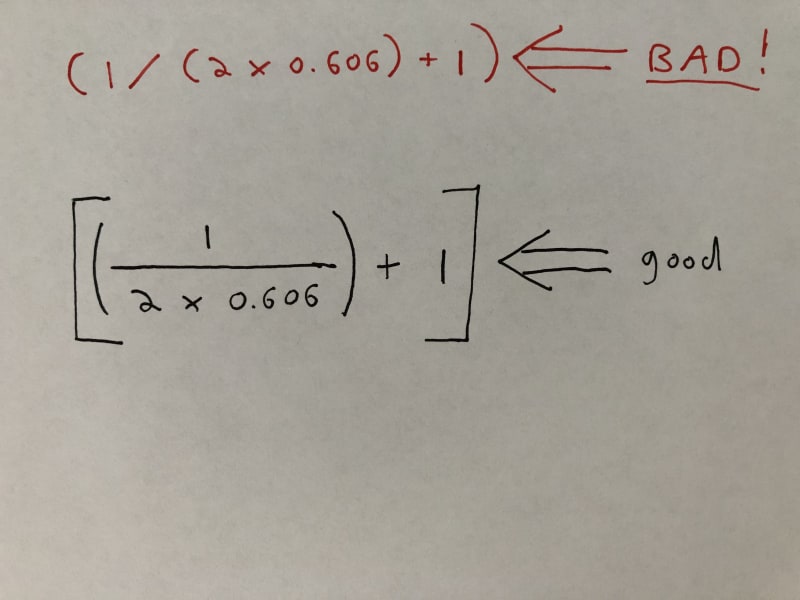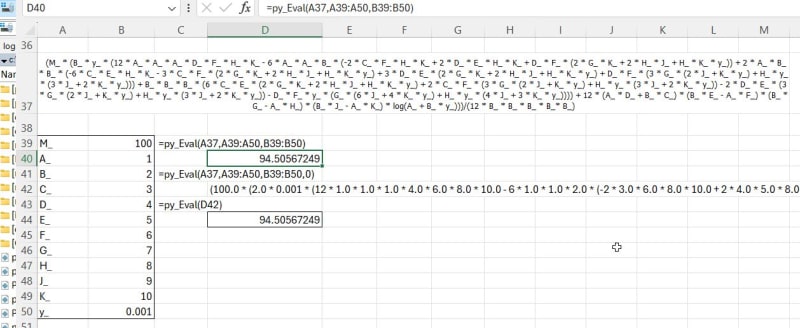Hi to all new here.
Can anyone advise me how to process the attached formula using a calulator to obtain the answer 7.43
Rgds
Can anyone advise me how to process the attached formula using a calulator to obtain the answer 7.43
Rgds
Follow along with the video below to see how to install our site as a web app on your home screen.
Note: This feature may not be available in some browsers.

rb1957 said:did the oP misread the RH expression ?
Hey rapt, if you give me values for those variables I'll take a crack at your equation. Got nothing else to do this weekend!

rapt said:dy = (M_ * (B_ * y_ * (12 * A_ * A_ * A_ * D_ * F_ * H_ * K_ - 6 * A_ * A_ * B_ * (-2 * C_ * F_ * H_ * K_ + 2 * D_ * E_ * H_ * K_ + D_ * F_ * (2 * G_ * K_ + 2 * H_ * J_ + H_ * K_ * y_)) + 2 * A_ * B_ * B_ * (-6 * C_ * E_ * H_ * K_ - 3 * C_ * F_ * (2 * G_ * K_ + 2 * H_ * J_ + H_ * K_ * y_) + 3 * D_ * E_ * (2 * G_ * K_ + 2 * H_ * J_ + H_ * K_ * y_) + D_ * F_ * (3 * G_ * (2 * J_ + K_ * y_) + H_ * y_ * (3 * J_ + 2 * K_ * y_))) + B_ * B_ * B_ * (6 * C_ * E_ * (2 * G_ * K_ + 2 * H_ * J_ + H_ * K_ * y_) + 2 * C_ * F_ * (3 * G_ * (2 * J_ + K_ * y_) + H_ * y_ * (3 * J_ + 2 * K_ * y_)) - 2 * D_ * E_ * (3 * G_ * (2 * J_ + K_ * y_) + H_ * y_ * (3 * J_ + 2 * K_ * y_)) - D_ * F_ * y_ * (G_ * (6 * J_ + 4 * K_ * y_) + H_ * y_ * (4 * J_ + 3 * K_ * y_)))) + 12 * (A_ * D_ + B_ * C_) * (B_ * E_ - A_ * F_) * (B_ * G_ - A_ * H_) * (B_ * J_ - A_ * K_) * LN(A_ + B_ * y_)))/(12 * B_ * B_ * B_ * B_* B_);
Eng16080 said:I did intent that primarily as a joke ...
